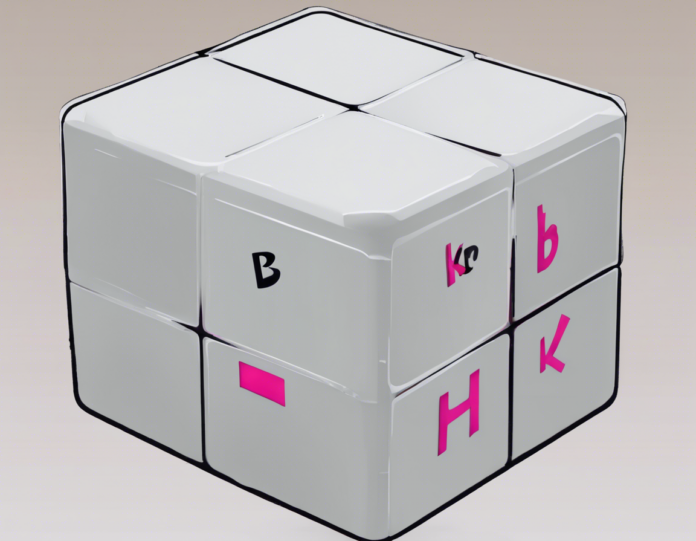Understanding A Cube Plus B Cube
In the realm of mathematics, algebraic expressions form the backbone of countless mathematical operations and problem-solving scenarios. Among these expressions, the sum of cubes, specifically A cube plus B cube, holds significant relevance. Understanding the formula and its applications can lead to enhanced problem-solving capabilities and a deeper comprehension of algebraic principles. In this blog post, we will delve into the intricacies of A cube plus B cube, explaining the formula in a simple and comprehensive manner.
The Formula: A Cube Plus B Cube
The sum of cubes formula revolves around the mathematical expression where two cube terms, A cube and B cube, are added together. The formula for A cube plus B cube is as follows:
A^3 + B^3 = (A + B)(A^2 - AB + B^2)
In this formula, A and B represent the two numbers or variables whose cubes are being added. The expression (A + B)(A^2 - AB + B^2) represents the factored form of the sum of cubes, which can simplify calculations and provide a structured approach to solving equations involving cube terms.
Expanding the Formula
To gain a deeper understanding of how the formula for A cube plus B cube works, let's delve into the expansion process. By expanding the factored form (A + B)(A^2 - AB + B^2), we can illustrate how the formula translates into the sum of the cubes of A and B.
Expanding (A + B)(A^2 - AB + B^2) yields:
A(A^2 - AB + B^2) + B(A^2 - AB + B^2)
= A^3 - A^2B + AB^2 + A^2B - AB^2 + B^3
= A^3 + B^3
Through this expansion, we can observe that the factored form of the sum of cubes simplifies back into the original expression of A^3 + B^3. This showcases the validity and functionality of the A cube plus B cube formula.
Applications of the Formula
The formula for A cube plus B cube finds numerous applications across various mathematical problems and scenarios. Some common applications include:
-
Factorization: The sum of cubes formula can aid in factorizing algebraic expressions by identifying and utilizing the A^3 + B^3 pattern.
-
Equation Solving: When encountering equations involving cube terms, the A cube plus B cube formula can help in simplifying expressions and solving for unknown variables.
-
Series and Sequences: In the realm of series and sequences, the sum of cubes formula plays a pivotal role in deriving patterns and relationships among terms.
-
Geometric Problem Solving: Geometric problems often involve cube-related calculations, where the A cube plus B cube formula can streamline computations.
Example Problems
To further solidify the understanding of the A cube plus B cube formula, let's explore a couple of example problems showcasing its application:
Problem 1: Calculate the value of 2^3 + 3^3.
Using the formula A^3 + B^3 = (A + B)(A^2 - AB + B^2), we have:
2^3 + 3^3 = (2 + 3)(2^2 - 2*3 + 3^2)
= 5(4 - 6 + 9)
= 5(7)
= 35
Therefore, 2^3 + 3^3 equals 35.
Problem 2: Solve the equation x^3 + 8 = 35.
By recognizing the cube term pattern, we can rewrite the equation as:
x^3 + 2^3 = 35
Using the A cube plus B cube formula, we find:
x + 2 = 35
x = 35 - 2
x = 33
Hence, the solution to the equation x^3 + 8 = 35 is x = 33.
FAQs (Frequently Asked Questions)
Q1: What is the sum of cubes formula used for?
A1: The sum of cubes formula, A^3 + B^3 = (A + B)(A^2 - AB + B^2), is utilized in simplifying cube terms, factorization, equation solving, and various other mathematical applications.
Q2: How can I remember the sum of cubes formula easily?
A2: To remember the sum of cubes formula, focus on the pattern A^3 + B^3 = (A + B)(A^2 - AB + B^2) and practice applying it to different problems regularly.
Q3: Can the sum of cubes formula be applied to negative numbers?
A3: Yes, the sum of cubes formula is applicable to both positive and negative numbers, as well as variables representing numerical values.
Q4: Are there any real-world applications of the sum of cubes formula?
A4: The sum of cubes formula is prevalent in various fields such as physics, engineering, computer science, and finance, where mathematical calculations involving cube terms are common.
Q5: How does the sum of cubes formula differ from the difference of cubes formula?
A5: While the sum of cubes formula is used to find the sum of two cube terms (A^3 + B^3), the difference of cubes formula deals with finding the difference between cubes (A^3 - B^3). The formulas follow distinct patterns and factorizations.
In conclusion, the A cube plus B cube formula serves as a fundamental tool in algebraic manipulations, providing a structured approach to dealing with cube terms in mathematical expressions and equations. By grasping the formula's essence, applications, and solving strategies, individuals can enhance their algebraic proficiency and problem-solving skills significantly.

